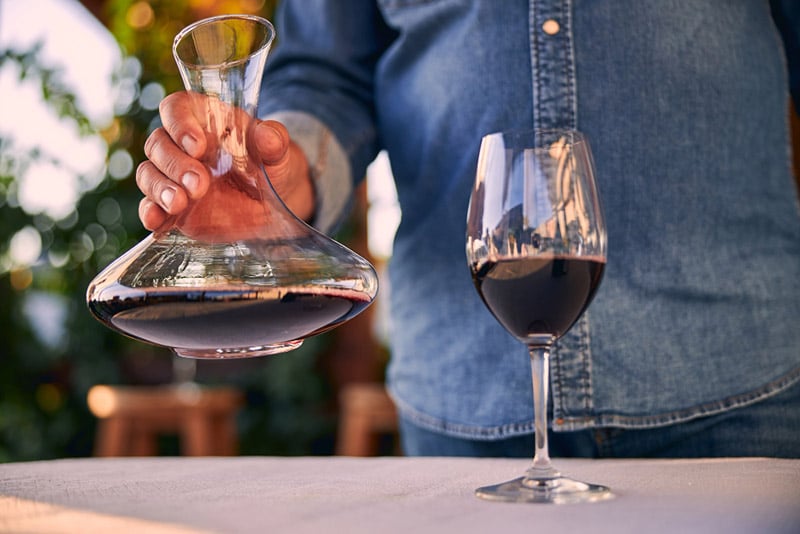If you enjoy wine, you’ve likely heard about how aeration can enhance the flavor of certain varieties.
However, is there any truth to this?
And, if so, how does aeration improve the flavor of wine?
To help you better understand this process, here is everything you need to know about aerating wine.
What Is Aeration?
Simply put, aeration refers to the process of exposing the wine to air so that it can ‘breathe’.
This process causes a chemical reaction between gases which changes the overall flavor of the wine.
When the air comes in contact with the wine, two things occur; evaporation and oxidization.
The evaporation of the liquid releases compounds into the air, which help remove the alcohol smell from the wine.
At the same time, oxidization causes a change in compounds that are sensitive to oxygen, which can help boost the flavors in the wine so that you can taste the full flavor.
However, all good things come in moderation, and the same is true of aeration.
While some aeration is good for several varieties of wine, too much can ruin the flavor and cause the wine to become flat.
Generally, younger reds will need longer aeration times, sometimes up to a few hours.
However, other varieties often reach their peak around the 30-minute mark.
Wines That Benefit From Aeration
Although you can aerate white wine, aeration is most commonly used for red varieties.
The types of wines that benefit most from aeration include:
- Cabernet Sauvignon
- Malbec
- Merlot
- Petite Sirah
- Bordeaux
- Syrah
- Nebbiolo
These wines can be aerated for up to an hour to release their full range of flavors.
If you want to aerate your white wines, the varieties to try include:
- Chardonnay
- Burgundies
- Riesling
- Chablis
White wines should be aerated for no more than 30 minutes, and you should always experiment a bit to see what time works best for you.
What to Use for Aeration
Although most people are familiar with decanters, there are also aerators that you can buy which help to aerate varieties of wines.
However, there are pros and cons to both aerators and decanters, and it’s worth knowing what each can provide.
Decanters
Decanters can be perfect for gatherings, and many can be quite beautiful.
This method of aeration can also help remove sediment from wines such as Syrah and Malbec, and they can be best for wines that require longer aeration.
However, they can be relatively expensive, especially if you want one that is eye-catching.
Similarly, because they are best for longer aeration times, you may not want to use them every day.
Aerators
Aerators work well for quicker aeration, and some can be attached right to the bottle so that they aerate your wine as you pour.
These work well for tannic wines, and they can also be much more portable than decanters.
However, aged wines shouldn’t be used with aerators, as they will benefit most from slow aeration.
Which Is Best For You?
Depending on the type of wine you like to drink, you may find that you benefit from either an aerator or a decanter more.
However, having both on hand can be beneficial, especially if you like drinking several varieties.
This will ensure that you always have an aeration method handy, regardless of the wine you are drinking.
Is Aerating Worth It?
Aerating can be a beneficial step that helps to bring out the best flavor in your wines.
Without aeration, you could miss out on the full flavor range that many wine varieties are renowned for.
Although not every wine will need aeration, it can be a crucial step if you want to experience the proper taste of your preferred wine.
The Bottom Line
If you love wine but are new to aeration, consider the varieties that you enjoy most, and see how they can benefit from aeration.
You may be surprised at how drastically the flavor changes after being allowed to breathe.
Similarly, aeration may even allow you to enjoy wines that you previously didn’t like due to their flavors.
Younger reds often change the most through aeration, and if you’ve stayed away from them before, you may find that they are your new favorites.
With all of this in mind, you can start to experiment with the different methods of aeration, as well as how it can change the flavor of different varieties of wine.

